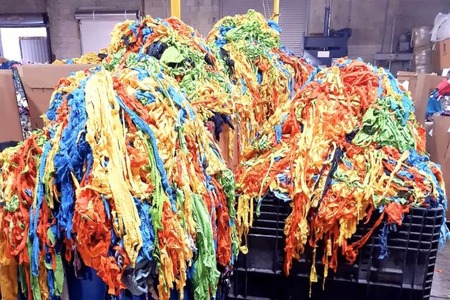
Lima’s garment district slammed by alleged dumping of Chinese textiles
YarnsandFibers News Bureau 2016-09-21 17:00:00 – LimaGamarra, Lima’s historic and massive informal garment district at La Victoria in Peru has been facing pressure due to alleged dumping of Chinese textiles, due to which hundreds of thousands of jobs are at risk. Peru’s clothing manufacturers cannot compete with cheap Chinese imports, which they say are being unfairly priced to squeeze out competition.
Diogenes Alva, a trade group president who has worked in Gamarra for over 50 years said that five thousand businesses have closed in the last 12 months. Gamarra has had three crises: the Velasco government, terrorism and right now alleged dumping of Chinese textiles is the worst.
Lima Chamber of Commerce (CCL) director Carlos Posada said that 4,900 Peruvian textile exporters closed between 2012 and 2015, and Peru’s textile exports declined by 30 percent. The CCL has requested that Peru’s trade commission, Indecopi, investigate alleged dumping of Chinese textiles.
Posada explained that a CCL study of shirts from China sold in Peru and the United States found that the same garments were priced on average of four times more in the U.S., and as much as 883 percentmore. While that does not meet the legal definition of dumping as defined by the World
Trade Organization, Posada believes it warrants an investigation.
The WTO’s defines dumping when goods are sold in an export market at a higher price than in their home market. If the clothes being imported into Peru are bought at prices lower than in China, then Peru would be entitled under its free trade agreement with China to slap import tariffs on those products.
In 2013 Gamarra faced a similar crisis, and Indecopi responded by invoking anti-dumping statutes to tax imports on five specific product codes. In May 2015, however, Indecopi overruled its previous resolution and repealed all tariffs on Chinese textiles. According to industry experts, the removal of the tariffs prompted an avalanche of cheap Chinese clothes in Gamarra which have swamped Peru’s production.
From the first quarter to the second quarter of 2015, when the tariffs were lifted, all five textile categories saw marked increases in import volumes. Shirts and underwear saw the most modest increases with 25 percent and 39 percentrespectively, while underwear and pants grew 77 percent while socks more than doubled.
According to some industry analysts, importers of Chinese textiles simply evaded those tariffs with falsified import documents and outright contraband.
Posada said that it is too easy for Peruvian importers of Chinese goods to appeal tariffs levied by SUNAT to have the tariff removed. He estimates that, in 99 percent of cases, the fiscal tribunal rules that SUNAT cannot determine the product’s true price and exonerates the tax.
In 2014 Chinese cotton began to replace Peruvian cotton, which is high-quality but expensive. Cotton production dropped 70 percent in 2013. Many cotton growers did not stop producing because of cheap competition from China, but to move on to higher profit crops.
At least 40 percent of the garments sold in Gamarra are made in China, while 50 percent of those made in Peru are made with Chinese cotton.
President Pedro Pablo Kuczynski during a campaign event in Gamarra during the 2016 elections said that they need to improve the brand and quality of the clothes and seek new markets.
Peru’s textile industry currently has 18,000 workshops which employ 2 million people.
Market Intelligence
Ask for free sample Report

experience
Customer Base
dedicated team
Countries Served Worldwide









